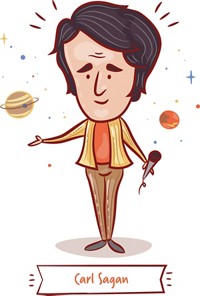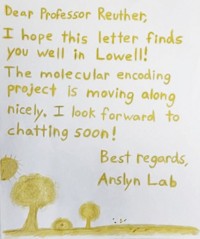Advertisement
Grab your lab coat. Let's get started
Welcome!
Welcome!
Create an account below to get 6 C&EN articles per month, receive newsletters and more - all free.
It seems this is your first time logging in online. Please enter the following information to continue.
As an ACS member you automatically get access to this site. All we need is few more details to create your reading experience.
Not you? Sign in with a different account.
Not you? Sign in with a different account.
ERROR 1
ERROR 1
ERROR 2
ERROR 2
ERROR 2
ERROR 2
ERROR 2
Password and Confirm password must match.
If you have an ACS member number, please enter it here so we can link this account to your membership. (optional)
ERROR 2
ACS values your privacy. By submitting your information, you are gaining access to C&EN and subscribing to our weekly newsletter. We use the information you provide to make your reading experience better, and we will never sell your data to third party members.
Art & Artifacts
Newscripts
A puzzling parachute, and epistles exposed
by Alexandra A. Taylor
March 14, 2021
| A version of this story appeared in
Volume 99, Issue 9
Chutes and ciphers

On Feb. 18, NASA’s Perseverance rover landed safely on Mars to investigate signs of past life. Four days later, a mystery was solved—although one less existential than the answers the rover is seeking. A father-son duo cracked the code to an encouraging message that mission engineers had sewn into Perseverance’s parachute.
At 2:00 p.m. (EST) on Feb. 22, NASA held a press conference to talk about the rover landing. While describing the parachute’s deployment, Allen Chen of NASA’s Jet Propulsion Laboratory hinted at a secret message in the orange-and-white pattern adorning the device. In addition to enabling incredible science, we hope our efforts and our engineering can inspire others,” he said. “Sometimes we leave messages in our work for others to find for that purpose.”
Maxence Abela, a graduate student in information technology at the Paris Graduate School of Digital Innovation, and his father, Google software engineer Jerome Abela, sprang into action. The pair deduced that the parachute’s orange and white sections corresponded to the one and zero bits, respectively, of the binary number system. Maxence noticed that every 10 bits, three white sections appeared in a row and that those functioned as separators for the bits in between. The duo then translated the bits from each section into numbers, which corresponded to letters’ positions in the alphabet. At last, they were left with the message “Dare mighty things,” a phrase from an 1899 speech by Theodore Roosevelt.
Maxence posted their finding on Twitter at 4:36 p.m. (EST), just over 2 h after Chen had first dropped the hint. But part of the puzzle remained: in the hours that followed, other internet sleuths solved the parachute’s outer rings, which correspond to 34°11′58″ N 118°10′31″ W, the coordinates of the Jet Propulsion Laboratory. Much like landing a rover on the Red Planet, solving NASA’s puzzle was a team effort.
Locked letters from the late Renaissance
NASA doesn’t have a monopoly on craftily concealed communiqués. Before mass-produced envelopes, correspondents would seal their missives by cutting and folding the letters themselves, a practice known as letter locking. These strategies involved varying levels of intricacy, but often a component of the package would be destroyed as it was opened, a telltale sign that the mail had been tampered with.
A trove of locked letters exists in the Brienne collection, a 300-year-old trunk containing thousands of locked letters, of which nearly 600 have never been opened. Until now, researchers had to permanently damage the artifacts in order to read their contents. So Jana Dambrogio of the Massachusetts Institute of Technology, Amanda Ghassaei of Adobe Research, and colleagues developed a method for virtually unfolding the letters while leaving them locked (Nat. Commun. 2021, DOI: 10.1038/s41467-021-21326-w). Their method couples X-ray microtomography—using a scanner originally designed to map minerals in teeth—with a computational flattening algorithm to produce legible scans of the paper, ink, and crease patterns.
The researchers tested their method on four letters from the 17th century, one of which they were able to read for the first time: a 1697 letter from Jacques Sennacques to his cousin, a French merchant at The Hague, requesting a certified death notice for a man named Daniel Le Pers. While this particular letter doesn’t add much to our understanding of life in early modern Europe, the method opens the door to discoveries in the Brienne collection and beyond, all while retaining the physical integrity of the artifacts and allowing historians to study the locking techniques in more detail. The technique is truly noninvasive—ironic, considering they’re reading other people’s mail.
Please send comments and suggestions to newscripts@acs.org.





Join the conversation
Contact the reporter
Submit a Letter to the Editor for publication
Engage with us on Twitter